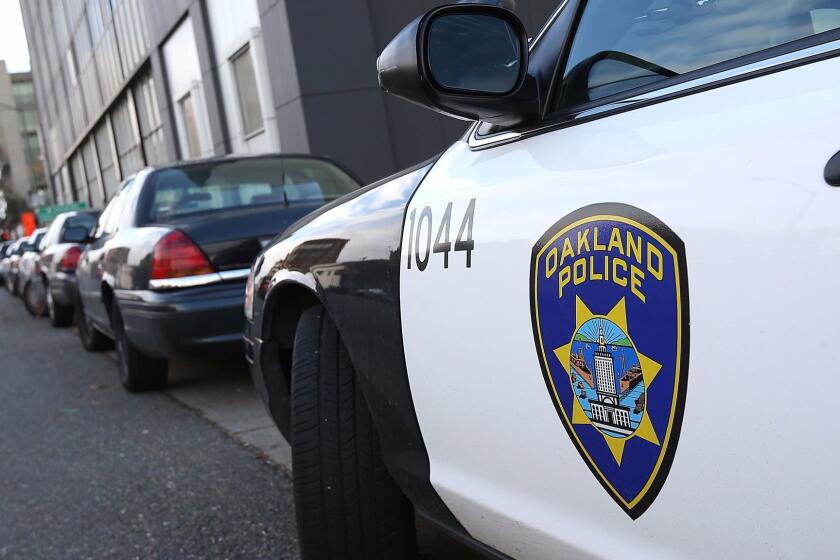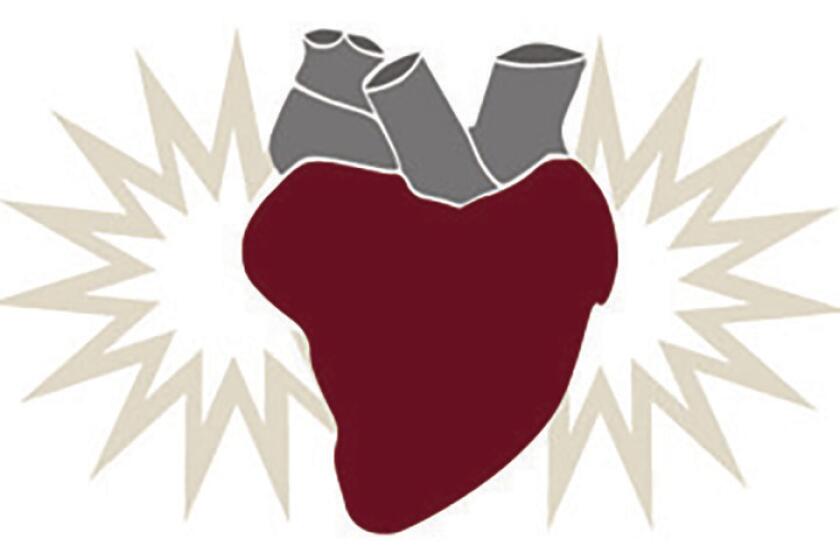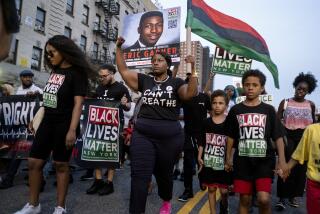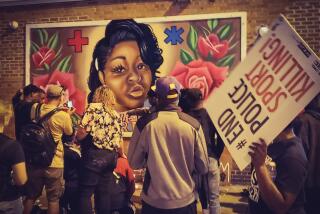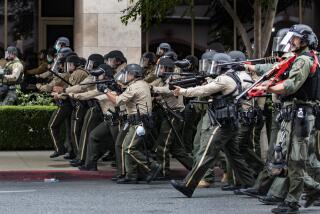The concerted campaign that got public health experts to declare racist policing a crisis
In the weeks after George Floyd was killed by a Minneapolis police officer, dozens of city councils, mayors and governors approved resolutions condemning police violence and calling racism a public health crisis.
One of the most strongly worded statements, passed unanimously by the Goleta, Calif., City Council, proclaimed that “Black people in America continue to live in fear of losing their lives at the hands of law enforcement.”
But long before these resolutions denounced racist policing practices, the largest organization of public health workers in the world was locked in a multiyear debate over a policy statement titled “Addressing Law Enforcement Violence as a Public Health Issue.”
With more than 130 citations, the 14-page statement is a dense piece of academic work, but in some respects it’s as impassioned as a message scrawled on a protest sign.
The story of what it took to get the 25,000-member American Public Health Assn. to explicitly state that systemic racism contributes to bad policing presages the conversations occurring across the country now.
“It was that same kind of exposure, awakening and awareness that we’ve seen in the past few months, but at APHA it happened on a slower scale because the times were different,” said Nancy Krieger, a professor of social epidemiology at Harvard T.H. Chan School of Public Health, who contributed research to the statement.
Emma Rubin, one of the 12 authors of the statement, put it this way: “People had to go with us on a journey of critical dialogue and interrogating the evidence. It was a process, but we got there.”
The origins of the statement technically date to 2015, but public health workers have been thinking about these issues for decades.
The disproportionate impact of policing on Black communities has been documented since at least the 1960s, and there is a long history of public health researchers examining the role racism plays in health differences among whites and Black and Latino communities.
More recently, the authors of the statement were inspired by activist groups, including Black Lives Matter, which formed in 2013, and the uprisings in Ferguson, Mo., after police fatally shot Michael Brown in 2014. Also influential was the work by the Guardian newspaper, which compiled the most accurate count to date of killings at the hands of American police.
At the same time, growing numbers of academic papers were documenting the psychological and physical health effects of police encounters, especially among Black people.
“It was becoming clear to more and more public health workers that policing was a threat, not just because police kill people, but also because of the stress and trauma that is experienced on an individual level and a community level when communities were having more contact with the police,” Rubin said.
Some public health experts are bracing for a spike in COVID-19 cases in the wake of protests against police brutality.
In 2015, Rubin was a graduate student in public health at San Francisco State University, where she and other students began writing papers about how police violence undermines the health of Black communities.
Any member of the APHA can propose a policy statement, so in early 2016 a small group of grad students from San Francisco State and the University of Illinois at Chicago set to work gathering research for a statement that would declare that current policing creates health risks for communities of color; the statement would point to systemic racism as the root cause.
The students cited data that found police in the U.S. killed at least 1,140 people in 2015, that Black people are more than twice as likely to be killed by law enforcement than white people and that police are rarely held accountable when they kill people.
The authors called for better reporting of law enforcement violence and urged federal and state governments to decriminalize as many activities as possible, including drug use and sex work. They also called for reallocating funds from policing to efforts that benefit public health, such as education and housing programs.
“Yes, we are abolitionist, and yes, we wrote the APHA policy statement with an abolitionist lens,” read a recent tweet from @endpolviolence, a Twitter handle that represents the authors of the statement. “Abolition is public health.”
The motto of the APHA is “For Science. For Action. For Health.” But the statement declaring police violence a public health issue met with opposition immediately.
Dr. Julie Graves, who chaired the science board that reviewed proposed policy statements in 2016, said that while she agreed with the sentiment behind the document, the board decided that it was poorly written, formatted incorrectly and lacked evidence.
“When it was first presented to us, we wrote the authors back and said everyone agrees with you, but you have to follow the rules,” she said.
The science board recommended that the statement not move forward.
The authors disagreed, and that fall, the statement was presented as a “late breaker,” which meant that if approved, it would remain APHA policy for a year while undergoing a demanding process of review and revision.
This time, leaders of the governing council tried to use a parliamentary procedure to keep the policy statement from coming to a vote. Graves was disgusted.
“I’d rather they’d rewritten it, but you have to let people vote,” she said.
About 1 in 1,000 black men and boys in America can expect to die at the hands of police. That risk is 2.5 times higher than for white men, new research shows.
After a long discussion, the 220-member APHA governing council passed the statement with 55% of the vote.
Though some APHA members didn’t actively resist the statement, they didn’t embrace it, either, according to Dr. Camara Jones, an epidemiologist and former APHA president who lectures widely on the health impacts of racism.
“There was nobody who would get up and say, ‘We don’t care about police violence,’ but there was what I would characterize as a lack of readiness,” she said.
Some APHA members struggled to understand how public safety would be protected if funds were moved away from the police.
“It’s not as if the APHA has not dealt with different aspects around racism and health,” Krieger said. “It has. But people needed to understand that the framework is not just about making police disappear; it’s also about determining what investment in community safety is needed that doesn’t involve more force.”
After reviewing transcripts of traffic stops involving 981 motorists, Stanford researchers have come up with proof of something that many Americans have believed for a very long time: Police officers tend to treat black citizens with less respect than white citizens.
For example, research shows that access to stable housing, robust mental health services, quality education and living wages all contribute to healthy communities.
After the 2016 APHA meeting, the statement’s authors set to work, with more volunteers, both students and veterans, collecting research, writing drafts and trying to draw up support from other APHA members. The group also gave itself a name: the End Police Violence Collective.
But at the 2017 annual meeting, the statement failed in a 55% to 45% vote.
“We were disappointed but resolute,” Rubin said. “We knew we had to keep pushing.”
Leaders of the APHA blamed the quality of the statement, not its perspective, for its failure.
“They didn’t strengthen it as the committee felt they needed to,” said Dr. Georges Benjamin, executive director of the APHA. “Our policies are used in Supreme Court briefs and other legal briefs. We want to know when someone says, ‘The APHA says this,’ the data is behind it.”
But at the same time, Benjamin was growing increasingly convinced that the APHA needed to address police violence.
“You see all these various components of how police violence impacts people’s health in negative ways,” he said. “Quite frankly, it was clear that its time had come.”
The End Police Violence Collective resumed work and mostly stuck to the data rather than referencing individual deaths. But the news of Black people dying at the hands of police was inescapable. In 2016, the year the late breaker was approved, two high-profile cases dominated the news: the deaths of Philando Castile in a suburb of St. Paul, Minn., and Alton Sterling in Baton Rouge, La.
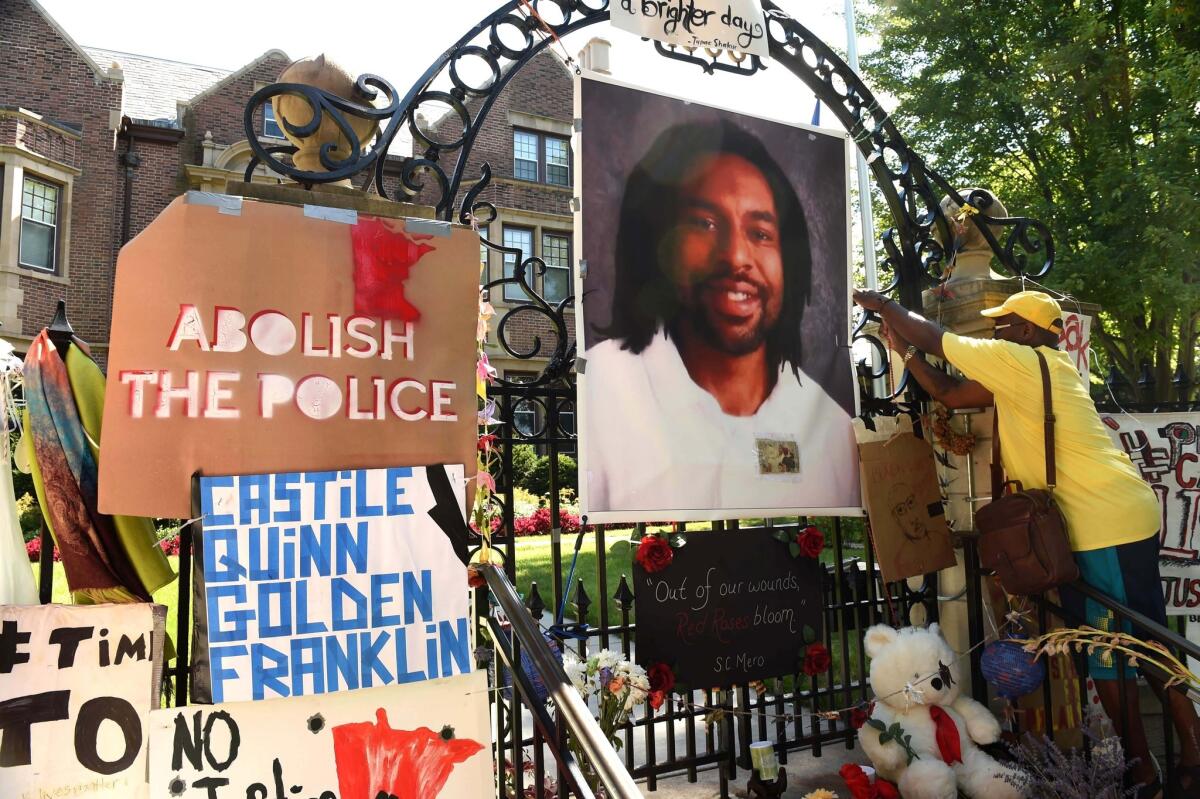
Rubin thinks APHA members were influenced by what they were hearing in the news as well as by incidents in their own lives.
“At hearings and in some conversations, we definitely heard from people who had had personal experiences of police violence — their loved ones or themselves had been affected,” she said.
When the APHA convened its annual meeting in November 2018, the collective was ready.
The group and its supporters distributed thousands of “End police violence” ribbons and fliers that stated: “Violence by law enforcement officers results in deaths, injuries, trauma and stress that disproportionately affect marginalized populations. ... It’s time the field of public health takes a stand!”
They organized a daylong workshop at which APHA members could hear from community organizers, health workers and family members of people who had been harmed by police violence.
On the day of the vote, supporters of the statement staged a rally outside the building, then filtered into a large auditorium to watch the balloting. Governing council members used clickers to cast their votes, which were recorded one by one on a big screen at the front of the hall.
Silently, the End Police Violence Collective and their supporters watched with growing joy as the votes came in: The statement not only passed but passed by the commanding margin of 87% to 13%.
“People were clapping, hugging, crying, all those things,” Rubin said. “It took a lot to get to this point.”
Graves was more circumspect. “They did improve it, but it still has some problems,” she said. “Is it the best policy? No. Is it the worst policy? No. But at least we have a policy statement.”
In humans, the distance between the brain and heart can be a foot or more.
The authors said they can’t attribute the passing of the statement to any particular action on their part.
“Each year the conversation got more nuanced and was underscored by the injuries and deaths at the hands of law enforcement,” said Omid Bagheri Garakani, a faculty member at the University of Washington school of public health and one of the co-authors. “And it has continued through 2018 all the way to George Floyd and Breonna Taylor now. The data was continuing to come out.”
The End Police Violence Collective still meets regularly, and the statement isn’t just sitting on a shelf collecting dust. It has appeared on public health syllabi and been cited in academic papers. Activists have used it to support campaigns on several fronts, such as efforts to end militarized police training exercises in Oakland and to help dismantle a gang database used by police in Chicago.
Asantewaa Boykin, an emergency room nurse and co-founder of the Anti Police-Terror Project in Oakland, said that in her own advocacy work, she references the statement at least twice a month.
“Even if I’m just saying, ‘The American Public Health Assn. said this was a problem two years ago,’ people are still shocked,” Boykin said. “They say, ‘What? They did? Oh, wow.’”

